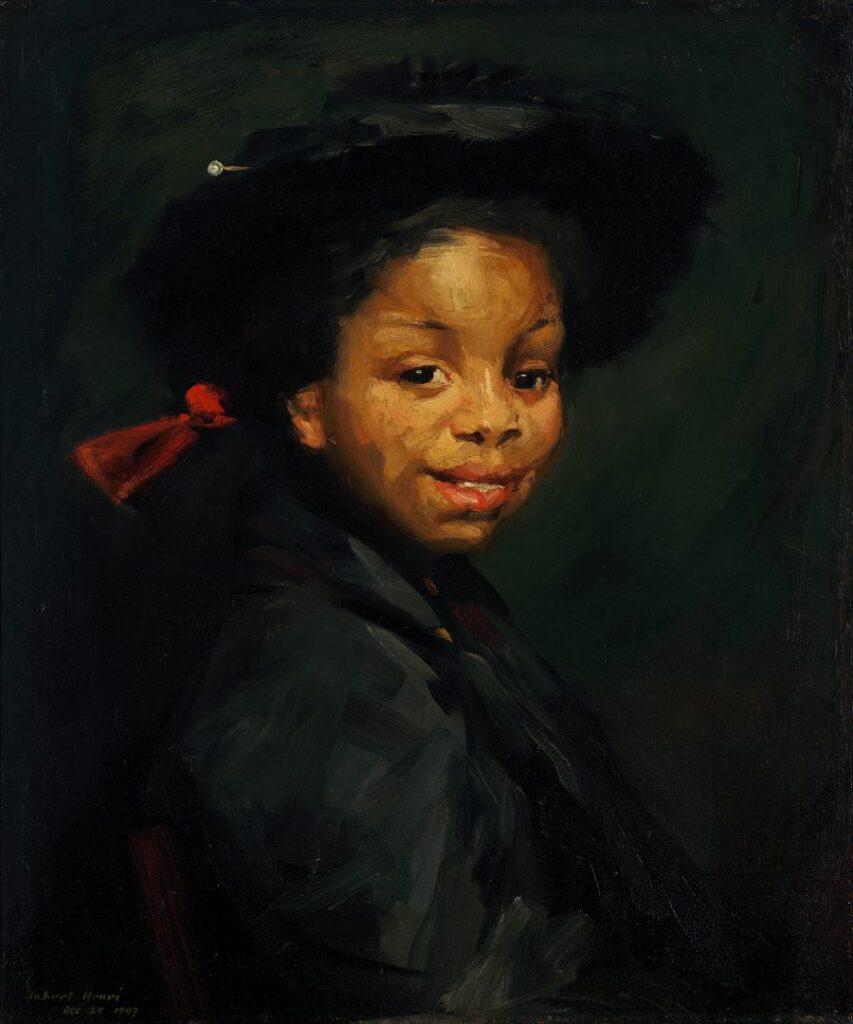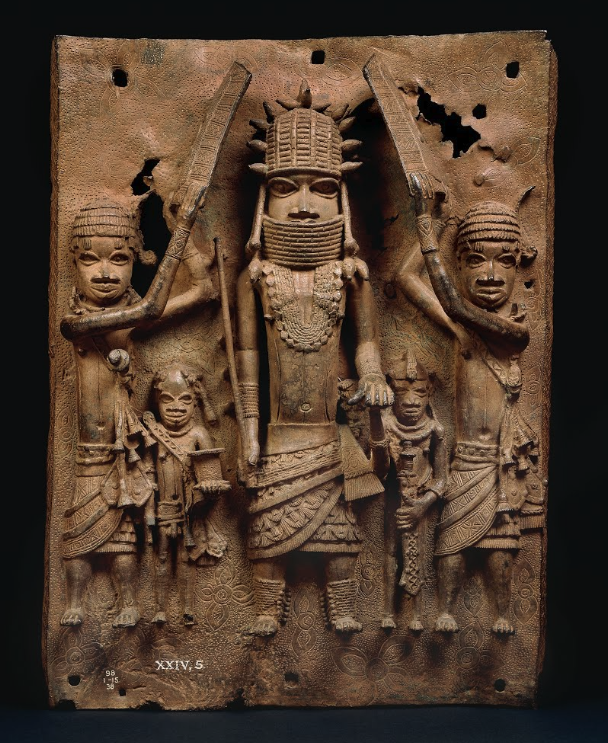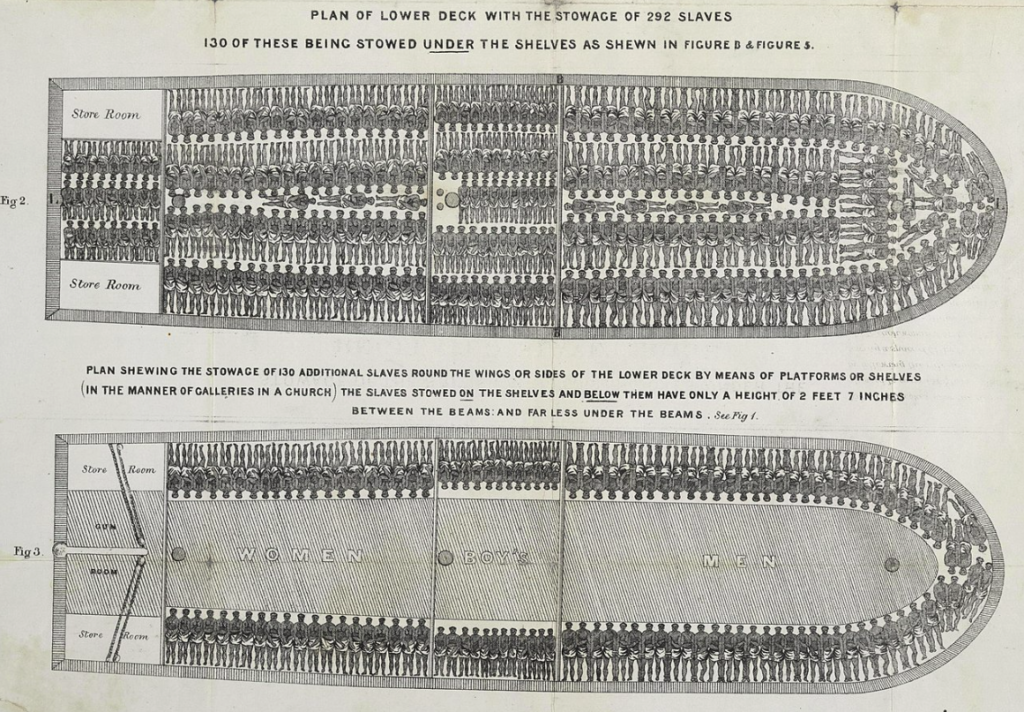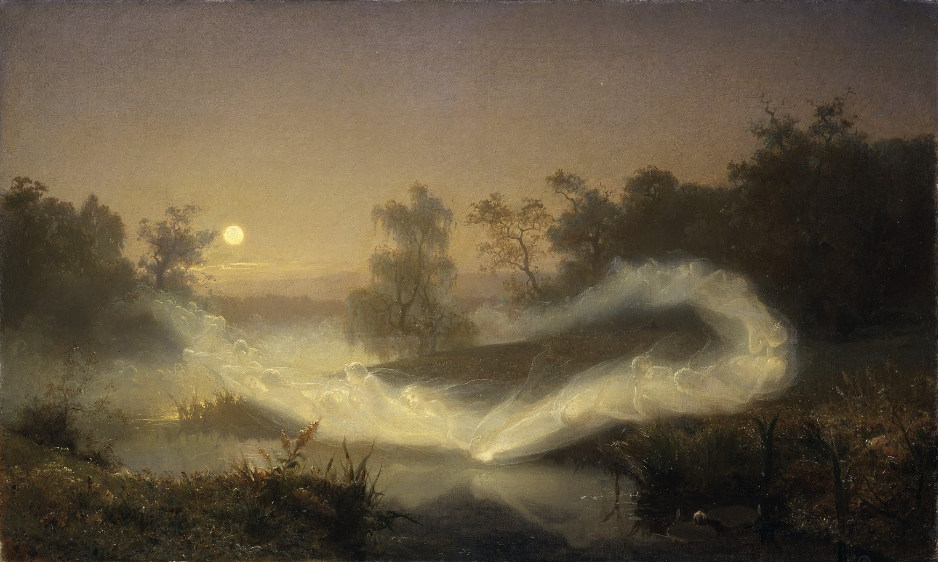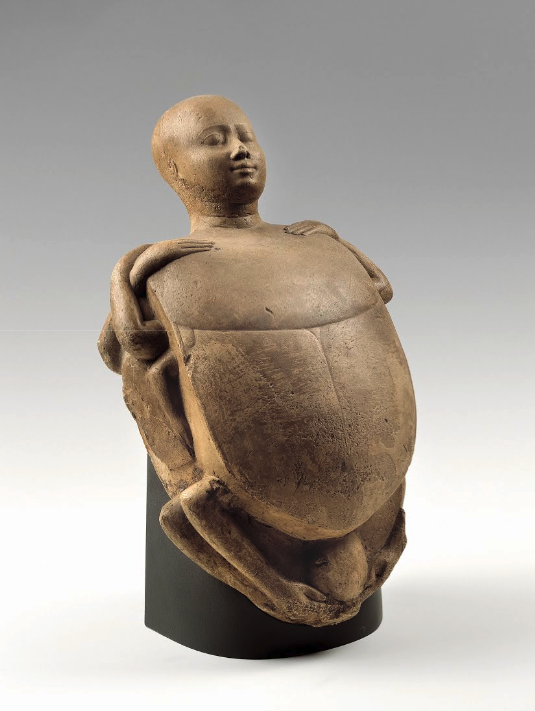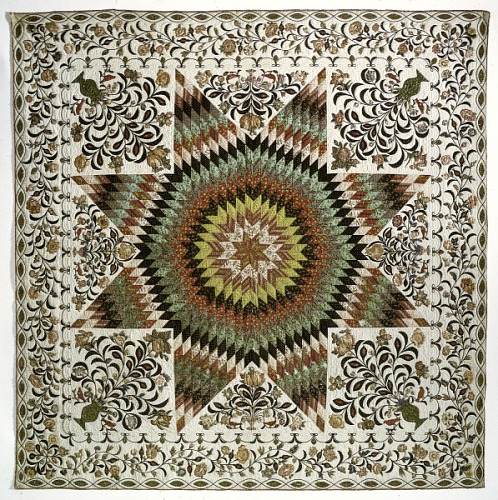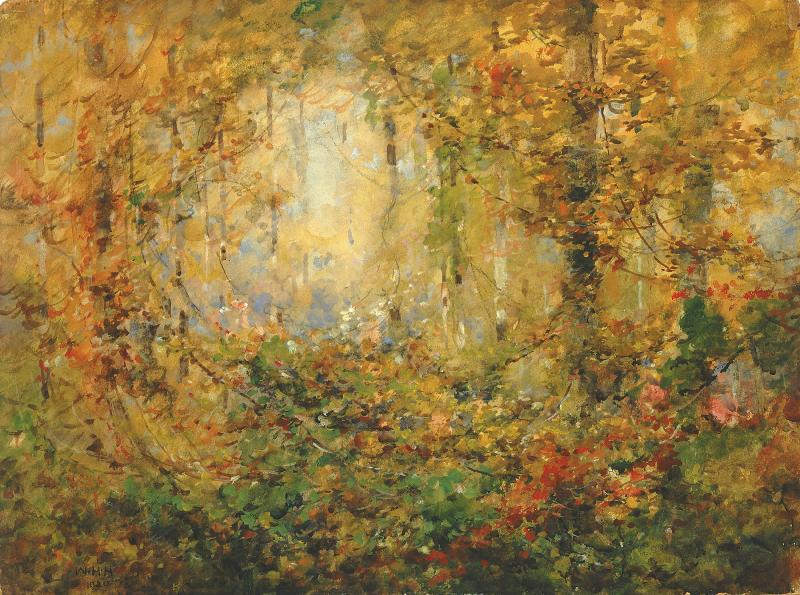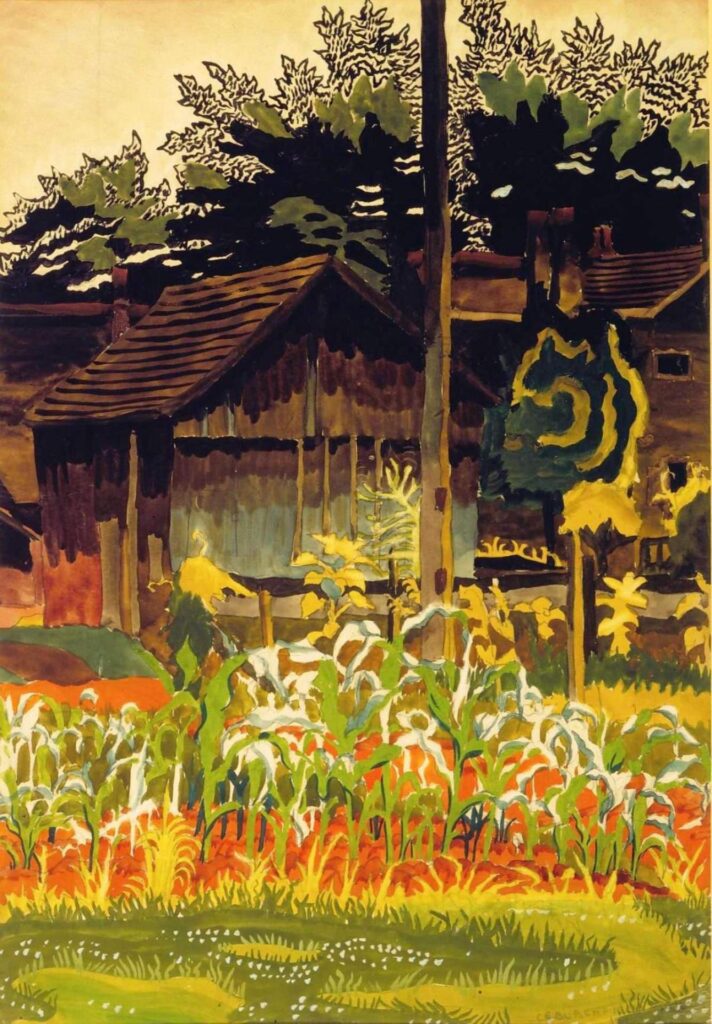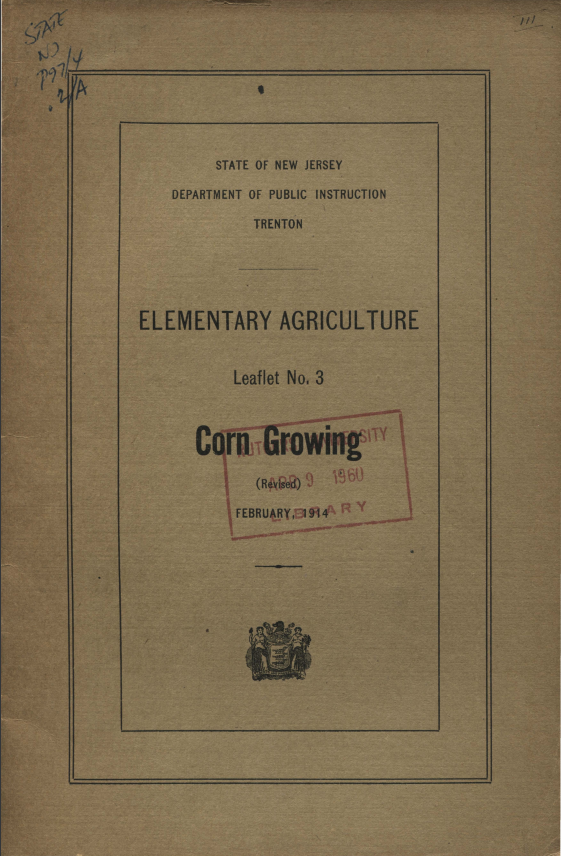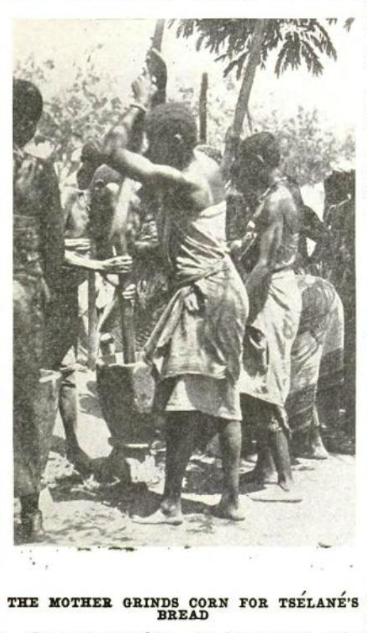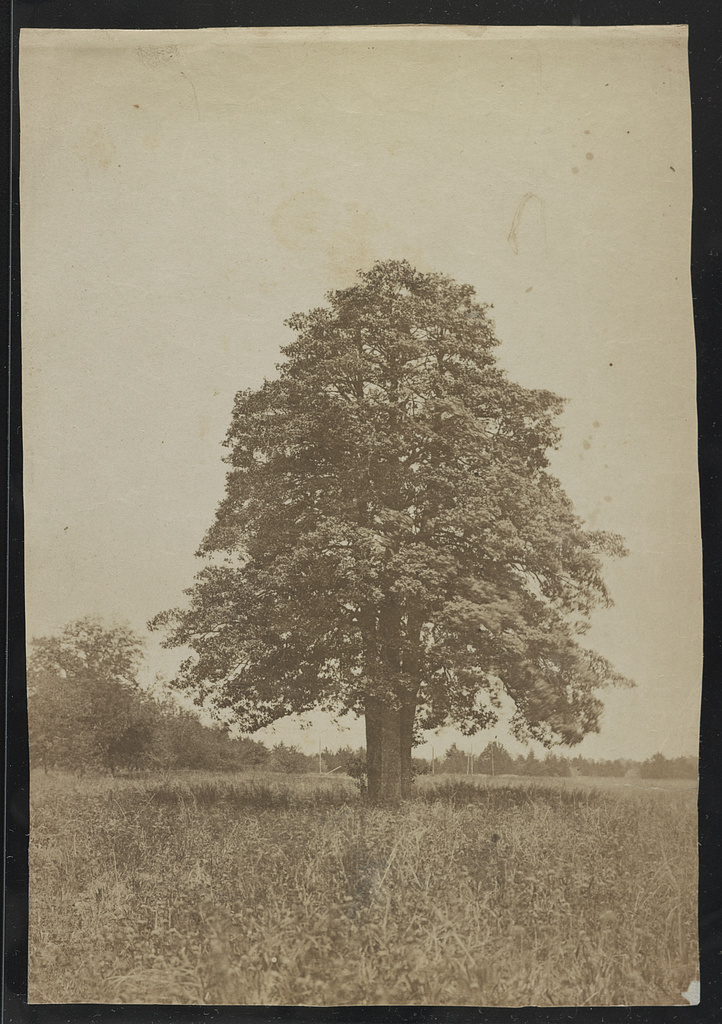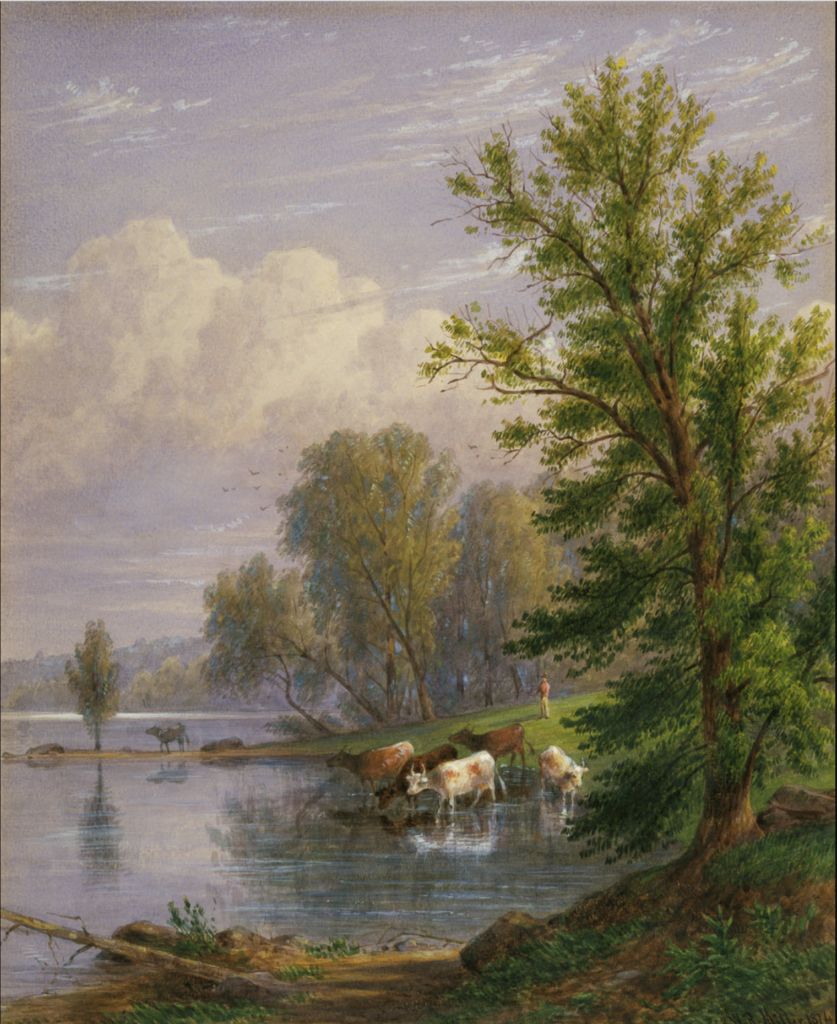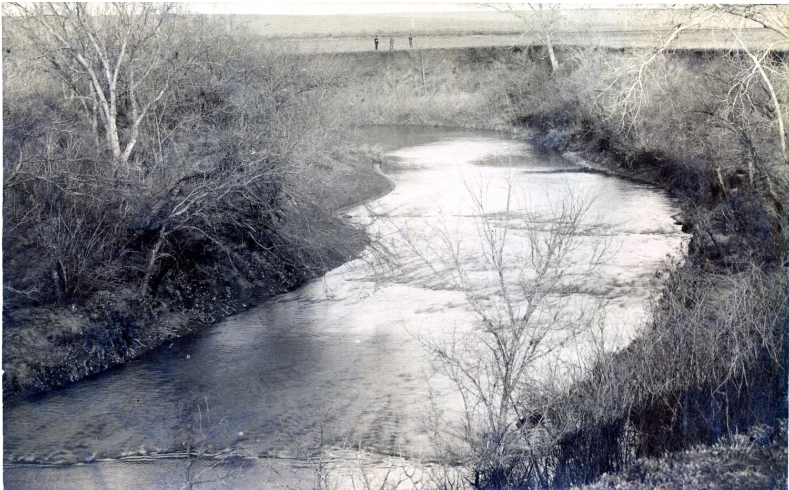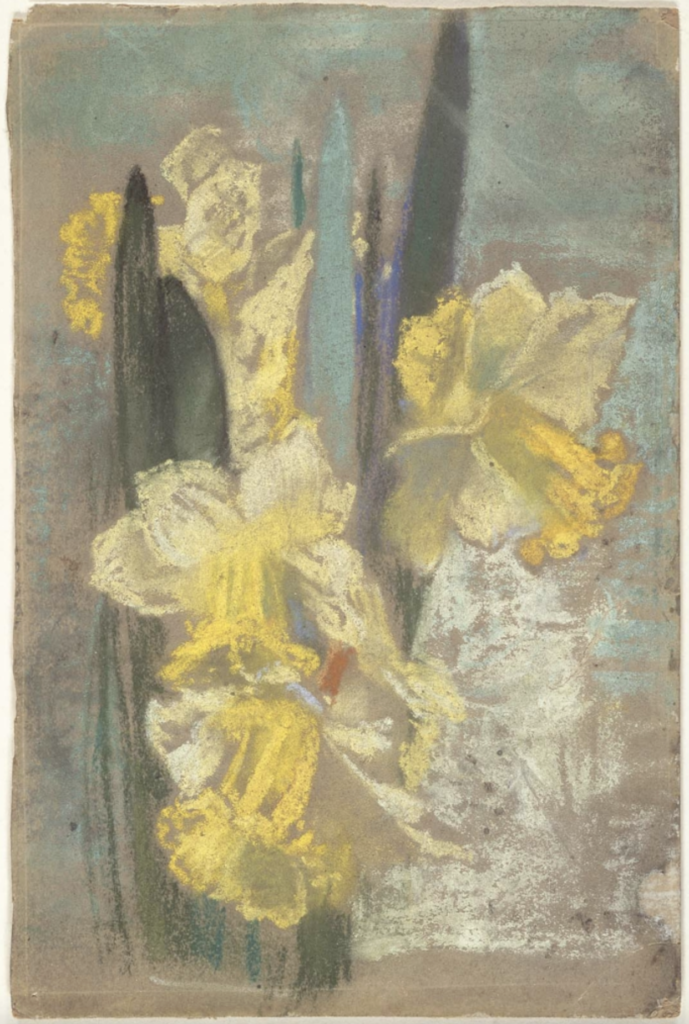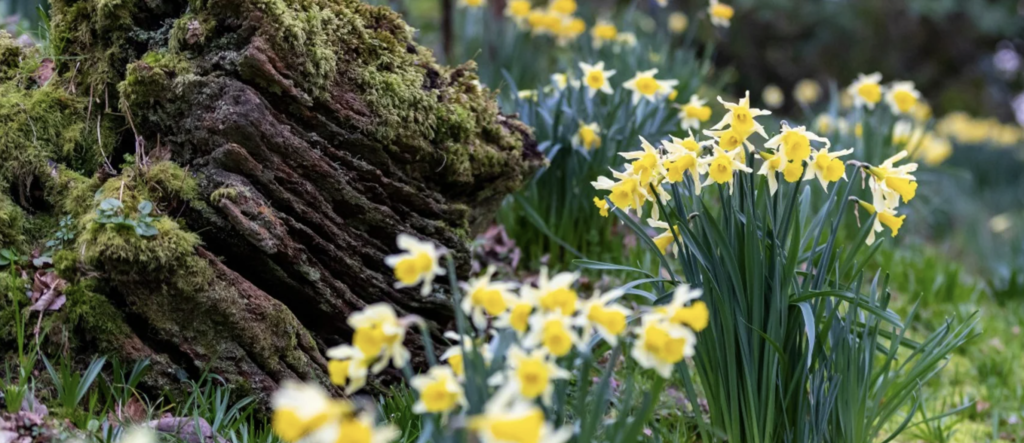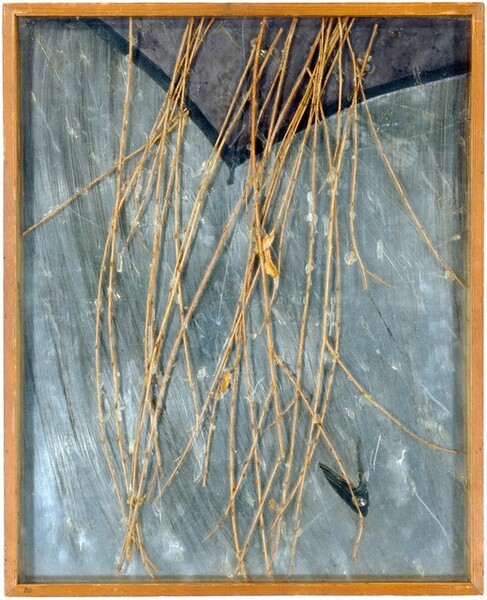How the Spider Won and Lost Nzambi’s Daughter
By Anonymous
Annotations by Rene Marzuk
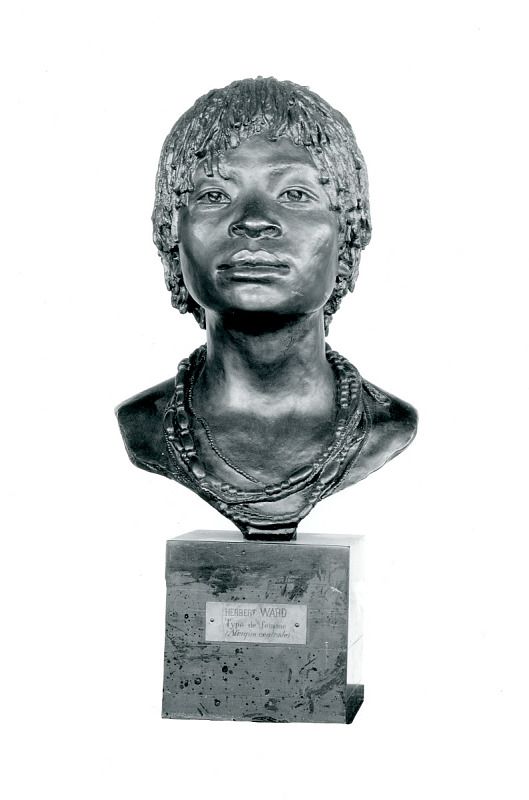
Nzambi, the goddess who dwelt upon earth, had a beautiful daughter. Nzambi vowed that no earthly being should marry her daughter unless he first brought the heavenly fire from Nzambi Mpungu, who dwelt in the heavens above the blue roof.[1] Now, the daughter was very beautiful and the people marveled saying, “How shall we secure this treasure, and who on such conditions will ever marry her?”
Then the spider said, “I will win Nzambi’s daughter if you will help me.” And they all answered, “We will gladly help you if you will reward us.” The spider than began to travel upward until he reached the blue roof of heaven. He then dropped down again to the earth, leaving a strong silken thread firmly hanging from the roof to the earth below. He now called the tortoise, the woodpecker, the rat and the sand-fly and bade them climb up the thread to the roof.[2] They did so. Then the wood pecker pecked a hole through the blue roof and they all entered the realm of Nzambi Mpungu, the god of the heavens.
Nzambi Mpungu received them courteously and asked them what they wanted. They answered him saying, “Oh, Nzambi Mpungu, of the heavens above, great father of all the world, we have come to fetch some of your terrible fire for Nzambi, who rules upon earth.”
“Wait here, then,” said Mpungu, “while I go to my people and tell them of the message you bring.”
But the sand-fly, unseen, accompanied Mpungu and heard all that he said. The Mpungu returned to the visitors and said, “My friends, how can I know that you have really come from the ruler of the earth and that you are not imposters?”
“Put us to some test,” they said, “that we may prove our sincerity to you.”
“I will,” said Mpungu. “Go down to your earth and bring me a bundle of bamboos that I may make myself a shed.”
And the tortoise went down and soon returned with the bamboos.
Then Mpungu said to the rat, “Get thee beneath this bundle of bamboos and I will set fire to it; then if you escape, I shall surely know that Nzambi sent you.”
The rat did as he was bidden. Mpungu set fire to the bamboos, and lo, when they were entirely consumed, the rat came forth from amidst the ashes unharmed.
“You are, indeed,” said Mpungu, “what you represent yourselves to be. I will go and consult my people again.”
The sand-fly was again sent after Mpungu and bidden to keep well out of sight, to hear all that was said, and, if possible, to find out where the fire, that is the lightning, was kept. He soon came back and related all that he had heard and seen.
Then Mpungu returned to them and said, “Yes, I will give you the fire you ask for if you will tell me where it is kept.”
And the spider said, “Give me then, O, Nzambi Mpungu, one of the five cases that you keep in the fowl house.”
“Truly,” said Mpungu. “You have answered me correctly, O spider. Take therefore, this case and give it to Nzambi, who rules upon earth.”
The tortoise carried it down to the earth and the spider presented the fire from heaven to Nzambi and Nzambi gave the spider her beautiful daughter in marriage.
But the woodpecker grumbled and said, “Surely the woman is mine, for it was I who pecked the hole through the blue roof, without which the others could never have entered the kingdom of Nzambi Mpungu.”
“Yes,” said the rat, “but see how I risked my life among the burning bamboos. The girl, I think, should be mine.”
“Nay, O, Nzambi,” said the sand-fly, “the girl should certainly be mine, for without my help the others would never have found out where the fire was kept.”
Then Nzambi said, “Nay, the spider undertook to bring me the fire and has brought it. The girl by right is his, but as you will make her life miserable if I allow her to live with the spider and as I cannot give her to all of you, I will give her to none, but instead I will give each of you her market value.”
Nzambi then paid each of them fifty bolts of cloth and a cask of gin, but the daughter ever after remained unmarried and waited on her mother.
“HOW THE SPIDER WON AND LOST NZAMBI’S DAUGHTER.” THE CRISIS’ VOL. 10, NO. 6 (OCTOBER 1915): 301-02.
[1] This story sems to come directly from Kongo mythology. The Kingdom of Kongo was a large kingdom in western central Africa. In Kongo lore, Nzambi Mpungu is the father god who lives in the heavens and protects the secret of fire. Upon creating the earth, Nzambi Mpungu sends Nzambi there, who becomes princess of the earth. Eventually, Nzambi Mpungo comes down to earth and marries Nzambi, his own creation.
[2] Sand flies are small golden, brownish, or gray flies. The females feed on blood. These insects transmit several diseases like the pappataci fever virus, kala azar, Oriental sore, espundia, and bartonellosis.
Contexts
Starting in 1912, the October issues of The Crisis, the official magazine of the NAACP, were dedicated to children. A typical edition of these children’s numbers would contain a special editorial piece and two or three literary works specifically for children, while still including the serious pieces about contemporary issues with a focus on race that The Crisis was known for. These October numbers were sprinkled with children’s photographs sent in by the readers.
In his first editorial for the Children’s number in 1912, W. E. B. Du Bois wrote that “there is a sense in which all numbers and all words of a magazine of ideas myst point to the child—to that vast immortality and wide sweep and infinite possibility which the child represents.”
The success of The Crisis’ children’s number led to the standalone The Brownies’ Book, a monthly magazine for African American children that circulated from January 1920 to December 1921 under the editorship of Du Bois, Augustus Granville Dill, and Jessie Fauset.
Definitions from Oxford English Dictionary:
bolt: A roll of woven fabric: generally of a definite length; being, in various cases, 30 yards, 28 ells, or 40 feet.
Resources for Further Study
- Under the title “How the Spider Won and Lost Nzambi’s Daughter,” the editors from The Crisis added the following text: “A Negro Folk Tale After Dennet; from the collection by M. N. Work.”
Dennet refers to Richard Edward Dennett (1857-1921), a Chilean-born English trader who later in his life wrote influential sociological and anthropological research on West African cultures. His book Notes on the Folklore of the Fjort (1898) contains more than 30 traditional stories from the French Congo.
M.N. (Monroe Nathan) Work (1866-1945) was an African-American sociologist who founded the Department of Records and Research at the Booker T. Washington’s Tuskegee Institute. - Bayeck, Rebecca. “Unsung History of the Kingdom of Kongo.”
